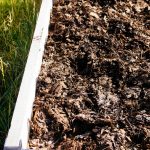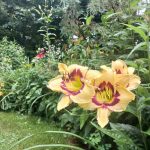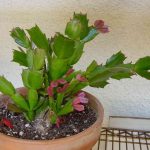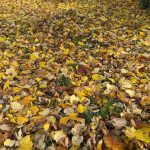Spring’s First Whisper in Earthen Vessels
Introduction
S first whisper — a short introduction to this piece.
S first whisper: Quick Notes
The chill of winter clings to the bones of the land, yet here, in the soft unfurling of green shoots and the scent of damp loam, spring’s first whisper stirs. It is a sound very faint, almost forgotten by the hurried and the loud, but those attuned to it will hear it—a delicate tremor in the wind, the sigh of thawing earth, the tender opening of a flower. This whisper calls to us, not with urgency, but with invitation. It asks us to slow, to notice, to inhabit the quiet spaces between seasons.
A mindful space is not simply a corner of the home or a plot of land; it is an embodied practice, a holding of awareness in the present moment through intentional design and ritual. It is a sanctuary where the soul may rest, where the hands may cradle soil and sprout, and where the heart may listen to the rhythms of the land. Spring’s First Whisper in Earthen Vessels is both a metaphor and a call to action—a reminder that the vessels we choose to contain our lives—our gardens, our homes, our daily routines—can either amplify or mute the resonance of this ancient song.
Here, we explore how to align our living spaces with the gentle awakening of the season, how to craft vessels that honor the earth’s gifts and our own inner landscapes. From planting seeds in recycled clay pots to weaving a ritual around the first sip of coffee or tea, we will find that mindfulness is not an abstract concept, but a tangible, sensory experience rooted in the fragrant soil, the dappled sunlight, and the patient growth of things yet unseen.
Seasonal Context: The Breath of the Earth
Spring’s First Whisper arrives not with fanfare, but with subtlety—a whisper that nudges the dormant into motion. The air grows thicker with the promise of rain, the ground softens beneath boot prints, and the forest floor is littered with the remnants of yesterday’s ice: melted snow, brittle twigs, and the faintest traces of animal paths. This season is less about action and more about receptivity. It is a time to let go of what no longer serves, to till the soil of our habits, and to plant intentions with the clarity of a mind unburdened by past storms.
In this season of transition, earthen vessels take on new meaning. They are more than containers for water or soil; they are symbols of transformation. The clay that once lay dormant in the kiln’s flame now holds life, much like our own capacity for renewal when we create space for reflection. By aligning our environments with the cadence of spring, we learn to move with the ebb and flow of natural cycles, to honor the stillness before the bloom, and to find peace in the uncertainty of becoming.
Mindful Spaces: Cultivating Presence
A mindful space is a vessel of awareness, crafted with intention and tended with care. It is a place where the senses awaken slowly, where the mind finds stillness amid the chaos, and where the soul recognizes its connection to the earth. In the language of spring, such a space becomes a sanctuary for what we might call “Seasonal Flow”—the gentle unfolding of intention, the patient ripening of ideas, and the quiet acceptance of change.
To create a mindful space within a home, consider the materials that surround you: the warmth of wool, the cool touch of stone, the softness of linen. Introduce elements that echo the season’s renewal—a vase of wild violets, a basin of fresh water, a rack of sun-dried herbs. Let these objects serve not as decoration, but as conduits for presence. A mindful space is not about aesthetics alone; it is about how spaces make us feel, how they guide our breath, and how they shape the way we hold attention.
Practical Steps: From Vessels to Living Systems
- Begin with a Seed: Plant a single herb or vegetable in a recycled clay pot. Let the act of tending it become a meditation on patience and growth.
- Mindful Watering: When watering plants, pour slowly, observing how the soil absorbs the liquid. Let the ritual become a practice in presence.
- Gratitude Grounding: Each morning, place a handful of soil in your palms and feel its texture. Carry this tactile grounding into your work, your conversations, your meals.
- Seasonal Sauces: Dry and plant herbs like sage, rosemary, or thyme in small clay vessels. These act as living reminders of the labor and joy that precede spring’s gifts.
Design Ideas: Harmonizing the Home
Designing Mindful Spaces requires more than selecting decor; it is about arranging the world to reflect inner harmony. Use soft, earthen tones—greens that evoke fresh moss, neutrals that mirror river stones, and accents of terracotta that echo the blush of dawn. Incorporate layered textures: rough-hewn wood, smooth ceramic, rough-hewn wool.
An earthen vessel in these spaces might be a woven basket filled with dried lavender, a clay planter overflowing with trailing pothos, or a stack of books on a windowsill where light filters through their pages. Such design choices are not arbitrary; they are acts of weaving consciousness into the fabric of daily life.
Rituals: Holding the Moment
Rituals transform moments into memory. As spring unfolds, create small ceremonies that honor the season’s quiet energy:
- Morning Offering: Place a cup of coffee or tea in a clay mug, sit with it, and invite the scent of roasted beans or brewed leaves to awaken your senses.
- Forest Bathing: Walk barefoot through a wooded path. Let the scent of pine and damp earth fill your lungs.
- Gratitude Stones: Paint smooth stones with symbols to place in the garden. Each week, add another stone, reflecting what you are grateful for.
These rituals are not about perfection, but participation. They are vessels through which we receive the whisper of the season.
Soil & Water Care: Nurturing the Foundation
Healthy soil is the root of all Mindful Spaces. Test your soil’s pH, add compost, and build its structure with mulch. A thriving garden is a metaphor for a thriving life—both require aeration, nourishment, and gentle attention.
When watering, do not rush. Let the water settle, soak deeply, and then recede. Rainwater, collected in barrels or buckets, holds a purity that tap water lacks. Use it to nourish your plants and your soil, and you will see how the earth responds when treated with reverence.
Wildlife & Habitat: Welcoming the Kinship of Beings
A mindful space is alive with more than flora and fauna; it is a web of relationships. Attract bees with pollinator gardens, welcome birds with hanging feeders, and provide shelter with insect hotels. These acts are not purely environmental—they are spiritual. When a butterfly lands on your marigold, it is a collaboration, a shared breath between species.
To create a refuge for creatures great and small, avoid synthetic pesticides. Instead, plant native species, leave leaf litter undisturbed, and install small water features. You will find that as the garden thrives, so does your sense of interdependence.
Seasonal Projects: Embodiments of Growth
- Spring Solstice Ceremony: At the longest day, build a bonfire or a pile of kindling. Reflect on what you wish to burn away, and light it with intention.
- Earth Apple Centerpiece: Fill a clay pot with local fruit, flowers, and herbs. Replace its contents weekly to mirror the season’s changing bounty.
- Test Garden: Sow seeds of local perennials in recycled clay pots. Observe their growth patterns and share your findings with neighbors.
These projects are more than tasks—they are invitations to engage with the land and with oneself.
Indoor/Balcony Extensions: Arcs of the Sky
Even those without vast outdoor space can create mindful environments. A windowsill herb garden, a hanging basket of ivy, or a clay planter with fresh jasmine brings the rhythm of spring indoors. Use sheer curtains to diffuse sunlight, place stones near your door to ground your energy, and let the scent of lavender or eucalyptus waft through the air.
Community & Sharing: The Weaving of Hands
Mindful Spaces are not isolated. They are part of a larger web. Start a seed swap with neighbors, build a community garden, or host a potluck in a sunlit courtyard. When we share our spaces—our resources, our stories, our care—we multiply the mindfulness they hold.
Join local efforts to plant trees, restore wetlands, or clean up parks. These acts bind us to the land and to one another.
Conclusion
Spring’s First Whisper in Earthen Vessels is not an event to be marked on a calendar, but a presence to be felt beneath feet, on tongues, and within hearts. Let your Mindful Spaces be the clay vessels that hold this season’s gifts—whether they are a pot of soil, a mug of tea, or a poem written in the margins of a journal. As the land awakens, so too may we, step by careful step, through the quiet, fertile practices of presence.
Image alt: Mindful Spaces — droplets resting on a leaf, sunlight piercing through branches.
S first whisper appears here to highlight key ideas for readers.














In verdant tapestry, a gentle breath,
Spring’s first whisper paints the earth,
Awakening dreams in clay so deep,
Eden’s echoes in each birth.
Petals unfurl, a tender song,
As life’s sweet melody is drawn.
“Your words bloom like spring’s first petal—soothing, sacred, alive.”
Beneath the thawing sky’s soft gaze,
Earthen vessels
“As the thawing sky cradles the earth, earthen vessels drink the dawn’s first whispers—gentle, stirred, alight.”